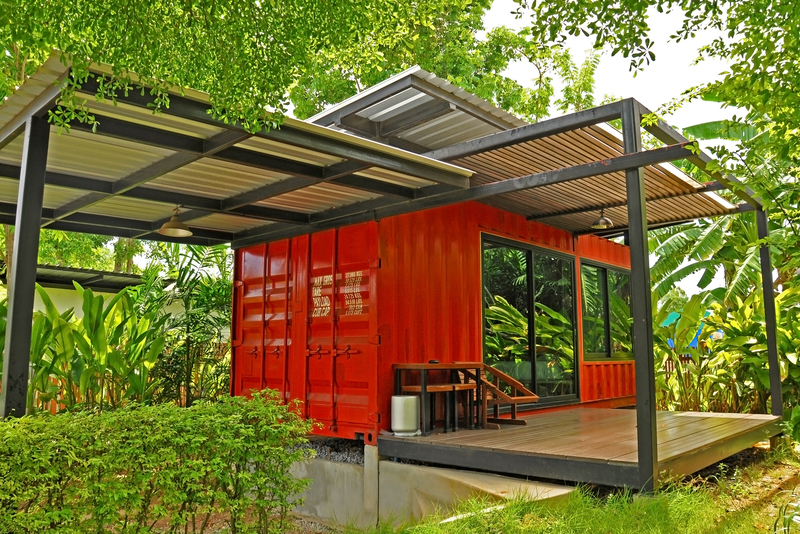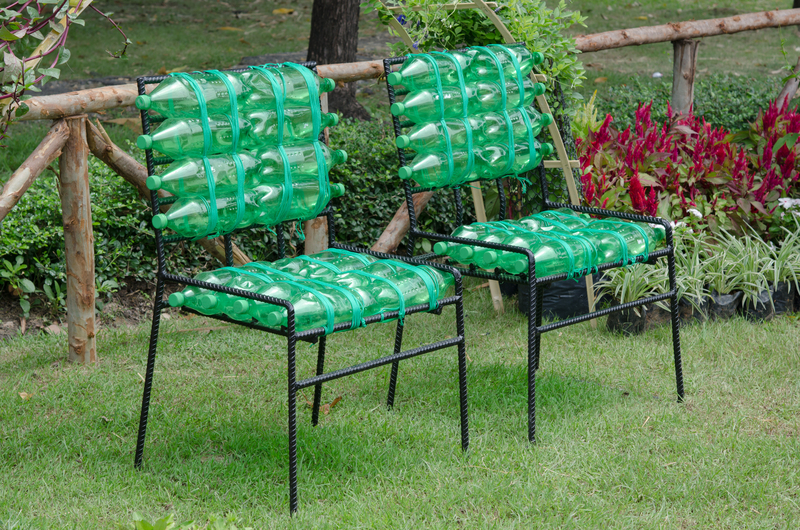From Scraps to Sustainability: Recycling Pots and Pans Made Easy
Looking to declutter your kitchen and help the planet at the same time? Old pots and pans piling up at home can take up precious cabinet space, but tossing them in the trash isn't the answer. Recycling pots and pans is not only an eco-friendly way to dispose of cookware, but it's also often easier than you might think.
In this comprehensive guide, you'll discover the best ways to recycle metal cookware, the benefits of sustainable kitchen practices, and easy tips to give your well-worn pots and pans a whole new life. Let's transform kitchen scraps into sustainability!
Why Should You Recycle Old Pots and Pans?
Environmental consciousness is more important than ever. Discarded cookware doesn't just clutter landfills; it also squanders valuable resources. Most pots and pans--whether stainless steel, aluminum, copper, or cast iron--contain metals that can be recovered and reused to make new products.
- Conserves Natural Resources: Recycling metals reduces the need for mining raw materials, preserving natural habitats.
- Reduces Landfill Waste: Metal cookware takes centuries to decompose in a landfill, contributing to environmental pollution.
- Decreases Energy Consumption: It typically takes far less energy to recycle metals than to produce new ones from raw ores.
Choosing to recycle your kitchen cookware is a simple, effective way to support a greener tomorrow.

What Types of Pots and Pans Can Be Recycled?
Before you start, understand which pots and pans can be recycled and how local regulations may vary:
- Stainless Steel Cookware - Highly recyclable and welcomed by most scrap yards.
- Aluminum Pots & Pans - Lightweight and valuable, aluminum is easy to recycle.
- Copper Cookware - Copper is highly sought-after by recyclers due to its value.
- Cast Iron - Thick and heavy, cast iron is recyclable but may need special drop-off locations.
- Non-Stick & Coated Pans - These require special attention. Some recycling centers accept them if the non-stick coating is removed or if they're processed separately.
TIP: Glass, ceramic, and multi-material pans are more challenging to recycle and may require special facilities or upcycling solutions.
The Step-by-Step Process: How to Recycle Pots and Pans
1. Assess the Condition
Before recycling, decide if your pots and pans are truly at the end of their life. If they're warped, heavily scratched, or have flaking coatings, recycling is usually best. Otherwise, consider donation or upcycling first.
2. Remove Non-Metal Parts
Most recyclers prefer metal-only items. Take off plastic handles, glass lids, rubber grips, or wooden knobs. These materials generally cannot be recycled with metals.
- Use a screwdriver or pliers to detach parts.
- Sort the non-metal pieces for proper disposal or reuse.
3. Scrub and Clean
While not always required, clean your cookware of excessive food residue and oils. It's not only considerate; it also ensures a higher quality recyclable product.
4. Identify Local Recycling Options
Recycling availability will depend on where you live. Options for pot and pan recycling include:
- Municipal Curbside Programs - Some local recycling pickups accept metal cookware. Check first with your local authority or search their online recyclables list.
- Special Drop-off Centers - These include scrap metal yards and specialized recycling collection sites.
- Retail Take-back Programs - Certain cookware brands and retailers offer take-back or trade-in programs (more below).
5. Drop Off or Curbside Collection
Once you've chosen a recycling solution, simply drop off your cookware or set it out for collection as directed. If using a scrap yard, separate metals (aluminum, copper, etc.) for potential reimbursement.
Beyond Recycling: Creative Ways to Reuse and Repurpose Old Cookware
If you're feeling crafty or would rather avoid the recycling center, **repurposing old kitchenware** is a fantastic, sustainable option. Here are a few imaginative ideas:
- Garden Planters - Drill drainage holes, fill with soil, and plant herbs or flowers in old pots and pans.
- Wall Art & Decor - Cast iron pans make unique wall clocks, while decorative lids can become art pieces or message boards.
- Bird Feeders & Baths - Hang an old saucepan from a tree, or upturn a battered frying pan for a backyard bird bath.
- Tool and Utensil Holders - Deep pots can organize garden tools, rolling pins, or kitchen utensils.
- DIY Lamps & Candleholders - Turn small pans into industrial-style lighting or rustic candle stands.
Upcycling is more than environmentally friendly--it adds character and charm to your living space!
Brand and Store Initiatives for Recycling Cookware
A growing number of retailers and cookware brands support sustainability through cookware recycling programs:
- Calphalon - Offers a popular ReNew recycling program. Customers can mail in used nonstick pans and receive a discount on new purchases.
- Le Creuset - Occasionally hosts trade-in events for enameled cast iron cookware, with recycling options for unusable pieces.
- Sur La Table & Williams-Sonoma - Participate in recycling or trade-in events in partnership with cookware brands.
- Local Scrap Dealers - Many will accept bulk kitchen metalware, sometimes offering a cash return for valuable metals.
Always call ahead or visit the company's website to check current policies and requirements.
Understanding the Recycling Process: What Happens to Your Old Pots and Pans?
Curious about the journey of your recycled skillet? Here's what typically happens after you recycle your pots or pans:
- Sorting: Metal items are sorted by type (aluminum, stainless, copper, cast iron).
- Shredding: A machine shreds the cookware into small pieces for easy melting.
- Melting: The shredded metal is melted in a furnace at ultra-high temperatures.
- Purification: Impurities are removed to ensure a high-quality recycled metal.
- Solidifying: The pure, molten metal is poured into molds to form ingots, sheets, or new parts.
- Manufacturing: The recycled materials are used to create new products--sometimes even new cookware!
This closed-loop process saves energy and reduces greenhouse gas emissions versus making metal goods from scratch.
Common Questions: Pots and Pans Recycling FAQ
Can you put pots and pans in the recycling bin?
Not always. Many curbside programs do not accept large metal household items. Always check your local recycling guidelines before placing cookware in your bin.
Can nonstick or Teflon pans be recycled?
It depends. Nonstick coatings like Teflon are not always recyclable and may require specialized processing. Check with local scrap yards; some accept them if the coating is worn away or the pan is fully metal.
What about glass lids or ceramic coated cookware?
Glass and ceramics require separate recycling processes. Do not include these with metal recycling. Look for local glass recycling centers or reuse opportunities instead.
Can I sell my old cookware for scrap?
Yes! Aluminum, copper, and cast iron pots and pans have value as scrap metal. Separate these from other items, remove non-metal parts, and take them to a recycler for potential cash.
Is upcycling really better than recycling?
Both are sustainable choices. Upcycling reduces waste and creates functional new items, while recycling ensures metals are returned to the production loop. Choose what best fits your needs and resources.

Sustainable Kitchen Tips: How to Build a Greener Cooking Space
Recycling pots and pans is a great step toward a more eco-friendly kitchen, but your sustainability journey doesn't end there. Incorporate these additional tips for a greener kitchen:
- Buy Durable, Quality Cookware: Invest in long-lasting materials like stainless steel and cast iron to reduce replacement frequency.
- Choose Recyclable Materials: Avoid cookware with mixed materials (such as plastics fused to metal) for easier end-of-life recycling.
- Practice Upkeep & Repairs: Season and maintain cast iron, tighten handles, and clean regularly to extend cookware lifespans.
- Donate Instead of Discarding: Gently used pots and pans are welcome at charity kitchens, shelters, or thrift stores.
- Seek Out Take-Back Programs: Support companies and retailers that prioritize recycling and upcycling.
Every small change adds up--leading to a healthier home and a healthier planet.
Final Thoughts: Making Pot and Pan Recycling a Habit
With a little effort and creativity, recycling pots and pans can become a simple, rewarding part of household sustainability. From understanding what your cookware is made of, to finding your nearest recycling center, and exploring crafty upcycling projects, there are solutions for every home cook.
Remember:
- Pots and pans don't have to end up in the landfill.
- Recycling metals saves energy and keeps our environment cleaner.
- Trade-in and retail recycling programs make it even easier to dispose of old kitchenware responsibly.
- Get creative and give beloved cookware a second life before tossing it out.
Your journey from scraps to sustainability starts in your kitchen. Next time you're ready to part with a pot or pan, choose to recycle, repurpose, and reduce waste--for a cleaner, greener world.